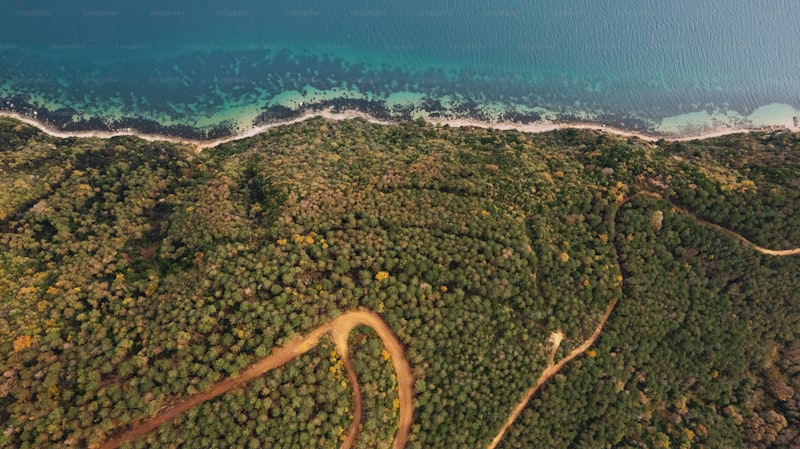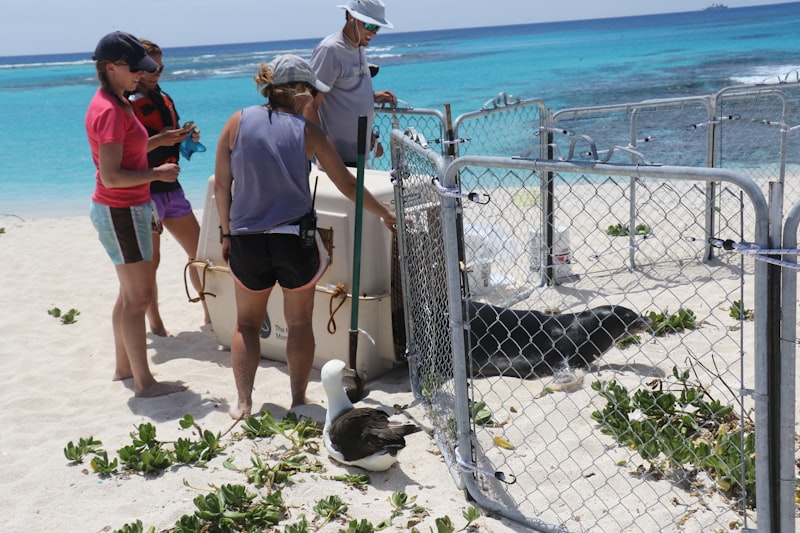Why are Marine Conservation Areas so vital? Picture a bustling underwater city teeming with diverse inhabitants—from colorful coral reefs to majestic whales. These areas act as shelters, preserving fragile ecosystems from overfishing, pollution, and habitat destruction. By regulating human interaction, they ensure that marine populations can regenerate and flourish for future generations.
In essence, Marine Conservation Areas are like insurance policies for marine biodiversity. They provide safe havens where marine species can reproduce without disturbance, helping to replenish fish stocks and maintain ecological balance. By preserving these areas, we not only protect marine life but also secure vital resources for coastal communities that rely on fishing and tourism.
What measures are taken within these conservation areas? Strict regulations govern activities such as fishing, boating, and diving to minimize human impact. Scientific research is encouraged to monitor ecosystem health and inform conservation efforts. Educating the public about marine conservation fosters understanding and support for these protected areas, encouraging responsible behavior towards our oceans.
Ultimately, the goal of Marine Conservation Areas is to ensure a sustainable future for our oceans. By preserving these underwater treasures, we can marvel at their beauty, study their intricate ecosystems, and continue to benefit from the invaluable services they provide to our planet.
Exploring Ocean Sanctuaries: A Comprehensive Guide to Marine Conservation Areas
Have you ever wondered about the hidden worlds beneath the ocean’s surface? Ocean sanctuaries, also known as marine conservation areas, are vital havens for marine life and ecosystems. These protected areas play a crucial role in preserving biodiversity and ensuring the health of our oceans for future generations.
What exactly are ocean sanctuaries? Imagine them as underwater national parks, designated to safeguard marine habitats and species. Just like how national parks protect forests and wildlife on land, marine conservation areas focus on preserving the delicate balance of ocean ecosystems. These sanctuaries can include coral reefs, seagrass beds, deep-sea habitats, and even migratory routes of marine animals.
Why are these sanctuaries so important? They serve as refuges where marine life can thrive without the pressures of overfishing, pollution, and habitat destruction. By protecting these areas, we not only conserve diverse species of fish, marine mammals, and corals but also maintain the overall health of the ocean. Healthy oceans are vital for regulating climate, providing food security, and supporting economies that rely on tourism and fisheries.
One notable example is the Papahānaumokuākea Marine National Monument in Hawaii, one of the largest marine conservation areas in the world. Its vast expanse of pristine waters and islands is home to rare species like Hawaiian monk seals and green sea turtles. Such areas not only protect species but also contribute to scientific research and our understanding of marine ecosystems.
How are ocean sanctuaries managed? Management involves a combination of scientific research, monitoring, and enforcement of regulations to ensure sustainable use. Activities such as fishing and tourism may be regulated to minimize impacts on sensitive habitats and species. Collaborative efforts between governments, scientists, local communities, and conservation organizations are crucial for the success of these initiatives.
Ocean sanctuaries are essential for the conservation of marine biodiversity and the sustainability of our oceans. By understanding their significance and supporting efforts to establish and maintain these protected areas, we can contribute to a healthier planet for generations to come.
Protecting Our Seas: Inside the Vital Role of Marine Conservation Areas
Have you ever wondered about the secret guardians of our oceans? Marine Conservation Areas (MCAs) play a crucial role in safeguarding marine biodiversity and ensuring the sustainability of our seas. These areas act as sanctuaries for a diverse array of marine life, from vibrant corals to majestic whales.
MCAs are like nature’s insurance policy, protecting vulnerable species and habitats from human activities such as overfishing and pollution. By designating specific zones where fishing and other potentially harmful practices are restricted, MCAs create safe havens where marine ecosystems can thrive undisturbed.
Imagine a bustling city where certain neighborhoods are designated as historical districts, preserving their unique architecture and culture. Similarly, MCAs preserve the natural heritage of our oceans, ensuring that future generations can still witness the wonders of untouched coral reefs and pristine underwater landscapes.
One of the key features of MCAs is their ability to promote sustainable tourism. By attracting visitors who are eager to witness untouched marine environments, these areas not only educate the public about marine conservation but also provide economic benefits to local communities. This symbiotic relationship between conservation and tourism helps to fund ongoing protection efforts while raising awareness about the importance of preserving our seas.
In essence, MCAs are not just restricted areas; they are vital lifelines for our oceans. They act as laboratories for scientists studying marine ecosystems and as refuges for species that are struggling to survive elsewhere. As we continue to face challenges like climate change and habitat destruction, MCAs represent a beacon of hope—a tangible reminder that through careful management and collective effort, we can protect and restore the health of our seas for generations to come.
Discovering Hidden Treasures: The Top Marine Conservation Areas Worldwide
One such remarkable area is the Great Barrier Reef Marine Park in Australia. Spanning over 344,400 square kilometers, it is the largest coral reef system globally, boasting a kaleidoscope of marine life. Snorkelers and divers alike are enchanted by its vibrant coral formations and the diverse species that call this underwater paradise home.
Moving across the globe, we encounter the Galápagos Marine Reserve. Situated in the Pacific Ocean near Ecuador, this UNESCO World Heritage site is famed for its unique ecosystem, inspired by Charles Darwin’s theory of evolution. Here, giant tortoises roam freely, and hammerhead sharks glide gracefully through the clear waters, offering visitors a glimpse into the wonders of evolutionary biology.

Closer to the equator lies the Maldives, renowned for its pristine beaches and crystal-clear waters. Beneath the surface, the Maldives’ marine protected areas harbor an astonishing array of marine species, including manta rays and whale sharks. It’s a haven for snorkelers and scuba divers seeking encounters with gentle giants of the sea.
Venturing south, we find the South Georgia and South Sandwich Islands Marine Protected Area in the Southern Ocean. Despite its remote location, this area teems with life, from vast colonies of penguins and seals to whales migrating through its icy waters. It serves as a critical sanctuary for wildlife amidst the Antarctic wilderness.
Each of these marine conservation areas tells a story of resilience and conservation efforts aimed at preserving our planet’s natural heritage. They remind us of the importance of sustainable practices and responsible tourism to safeguard these fragile ecosystems for future generations to explore and marvel at.
The world’s top marine conservation areas offer more than just natural beauty; they provide a window into our planet’s past, present, and future. Whether you’re an adventurer, a conservationist, or simply someone who appreciates the wonders of nature, these hidden treasures beneath the waves await your discovery.
From Coral Reefs to Polar Waters: Mapping the Diversity of Marine Conservation Areas
Imagine diving into the warm waters of the Great Barrier Reef, where a kaleidoscope of marine life unfolds before your eyes. Here, vibrant corals form intricate structures that provide shelter and sustenance to countless species of fish, turtles, and mollusks. The reef’s biodiversity is a testament to nature’s resilience and the delicate interplay between organisms and their environment.
In stark contrast, the polar waters of Antarctica and the Arctic present a different but equally awe-inspiring landscape. These icy realms, though harsh and unforgiving, harbor unique species adapted to survive in extreme conditions. From majestic polar bears traversing frozen expanses to elusive seals and whales navigating beneath the sea ice, these regions exemplify adaptation at its finest.
The diversity of marine conservation areas extends beyond the visible. Beneath the surface, intricate food webs connect species in a delicate dance of predator and prey. Each link in these chains, from microscopic plankton to apex predators, contributes to the overall health of the ecosystem. Protecting these areas isn’t just about preserving individual species; it’s about safeguarding the intricate web of life that sustains our planet.
Why are these conservation areas so vital? They serve as nurseries for fish stocks, helping to replenish populations that support global fisheries. Additionally, they act as carbon sinks, absorbing and storing vast amounts of carbon dioxide, thereby mitigating climate change impacts. Moreover, these areas are often rich in cultural heritage, providing indigenous communities with resources and livelihoods tied to the sea.
Behind the Scenes: How Marine Conservation Areas Safeguard Ocean Ecosystems
Ever wondered what goes on behind the scenes to protect our oceans? Marine conservation areas play a crucial role in safeguarding ocean ecosystems, ensuring that marine life thrives and biodiversity flourishes. These areas are like sanctuaries underwater, where strict rules and regulations are enforced to preserve delicate ecosystems and prevent overexploitation.
Imagine a bustling city underwater, where each species plays a vital role in maintaining balance. Marine conservation areas act as guardians of this underwater metropolis, ensuring that habitats remain intact and species can flourish without human interference. It’s a delicate dance of preservation and stewardship, where every decision is made with the long-term health of the ocean in mind.
From coral reefs teeming with colorful fish to deep-sea trenches harboring mysterious creatures, marine conservation areas protect a wide array of habitats. These areas often span vast stretches of ocean, encompassing diverse ecosystems that support millions of species. By designating these areas as protected, authorities can regulate activities such as fishing and tourism to minimize negative impacts and allow ecosystems to recover and thrive.
But it’s not just about restricting human activities. Marine conservation areas also serve as centers for research and education, where scientists study marine life and ecosystems to better understand their intricacies. This knowledge informs conservation strategies and helps policymakers make informed decisions about how best to manage and protect these valuable natural resources.
In essence, marine conservation areas are like nature’s insurance policy, safeguarding our oceans for future generations. They represent a commitment to sustainability and responsible stewardship of our planet’s most precious resource. By protecting these areas, we not only preserve biodiversity but also ensure that future generations can continue to marvel at the wonders of the underwater world.
Ecotourism Escapes: Best Destinations in Marine Conservation Areas

Imagine yourself drifting through the crystal-clear waters of the Great Barrier Reef, Australia’s iconic marine treasure. Here, every dive unveils a kaleidoscope of marine biodiversity, from colorful clownfish to graceful manta rays. The reef’s sheer size and diversity make it a UNESCO World Heritage site and a beacon for sustainable tourism efforts.
Closer to home, the Florida Keys National Marine Sanctuary beckons with its shallow seagrass beds teeming with life. It’s a sanctuary for endangered species like the West Indian manatee, offering visitors a chance to kayak through mangrove forests or dive into the wrecks that have become artificial reefs bustling with marine activity.
For those craving a remote escape, the Galápagos Islands in Ecuador offer a glimpse into a world where wildlife roams freely. Encounter giant tortoises, marine iguanas, and blue-footed boobies both on land and underwater. Each island within the archipelago boasts unique ecosystems shaped by volcanic activity, making it a living laboratory for evolutionary biology.
Further south, off the coast of Belize, lies the Belize Barrier Reef Reserve System. This UNESCO site shelters delicate coral formations and rare marine life like the elusive whale shark. Snorkelers and divers marvel at the intricate coral gardens, while eco-lodges along the coast promote sustainable practices to protect this natural wonder.
Frequently Asked Questions
Why are marine conservation areas important?
Discover why marine conservation areas are crucial for preserving biodiversity and ecosystems. Learn about their role in protecting endangered species and habitats, promoting sustainable fishing practices, and ensuring the resilience of marine environments against climate change impacts.
What are marine conservation areas?
Marine conservation areas are designated regions in oceans, seas, or coastal areas that are protected to preserve marine ecosystems and biodiversity. These areas aim to safeguard vulnerable species, habitats, and natural resources from human activities like fishing and pollution, ensuring their sustainable use for future generations.
How are marine conservation areas managed?
Learn how marine conservation areas are effectively managed, ensuring the preservation of marine biodiversity and habitats through strict regulations, monitoring programs, and community involvement.
What activities are allowed in marine conservation areas?
Activities allowed in marine conservation areas typically include non-extractive uses such as snorkeling, diving, wildlife observation, and educational research. These areas aim to protect marine biodiversity and ecosystems while allowing sustainable recreational and educational activities.
How can I contribute to marine conservation in these areas?
Discover how you can make a difference in marine conservation. Learn practical ways to contribute to preserving ocean habitats and marine life in your local area and beyond.


